According to the authors of ‘Butterflies of Surrey Revisited‘, “finding an adult brown hairstreak is one of the most difficult tasks for a butterfly enthusiast”. As a fond admirer of the fluttering jewels, I must count myself very fortunate then, for in the Summer months I managed to catch a glimpse of two females, both by chance.
The UK status
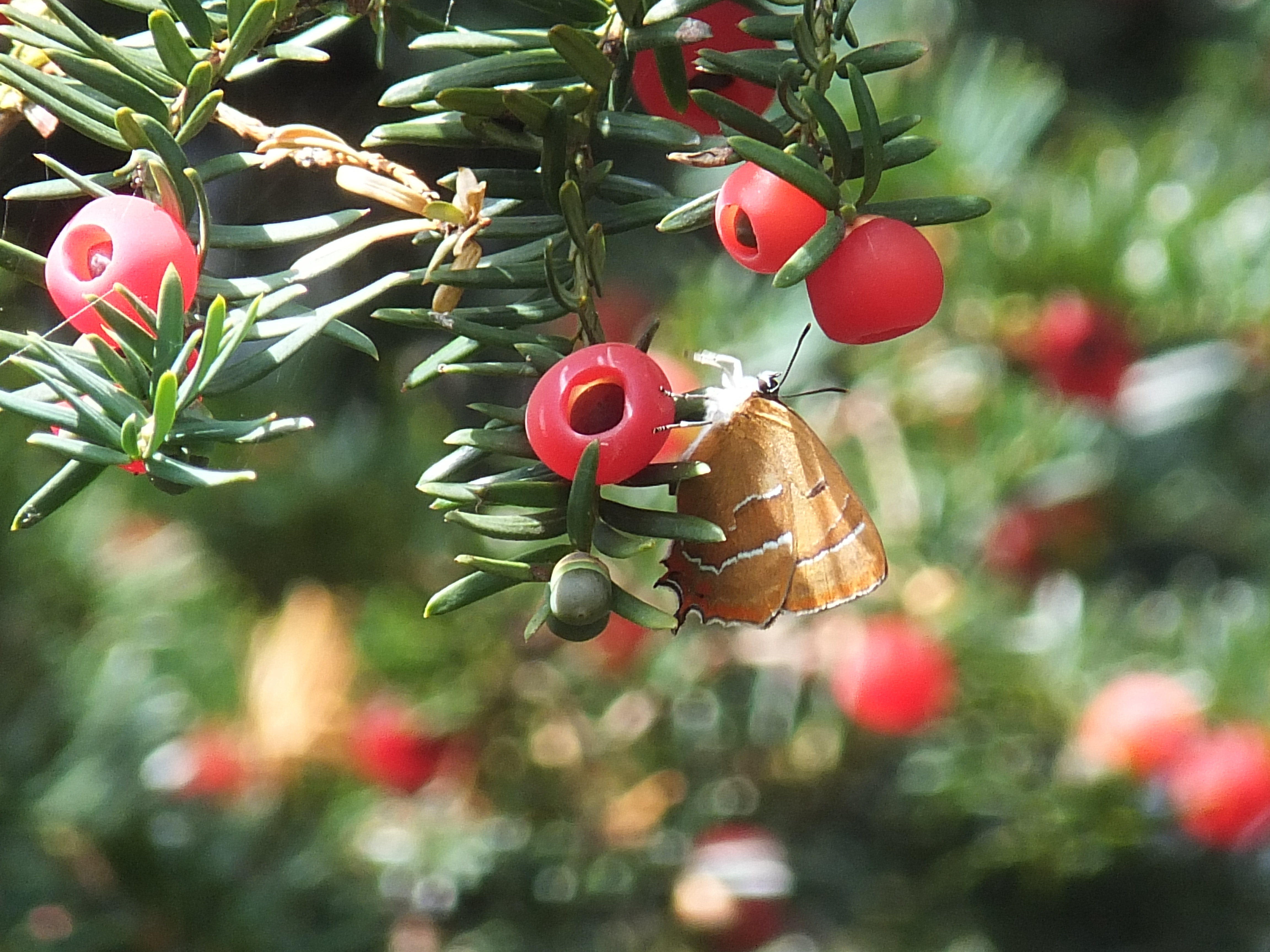
The underside of a female brown hairstreak, balancing on a yew ‘aril’ at Cuddington Cemetery
Sadly, these sightings are becoming rarer and rarer, as data collected by Butterfly Conservation suggests that their population has decreased by 40% from the period between 1995 – 2009. For this reason, the brown hairstreak was recognised as a (now archived) UK Biodiversity Action Plan Priority Species. In other words, it is a species experiencing rapid population declines and faces a high risk of regional extinction.
Reasons for this decline can be attributed to the loss of British hedgerow. Nationally, since 1945 over 121,000 km has been lost to make way for larger fields for agriculture and development. Importantly, blackthorn Prunus spinosa, a scrub species largely associated with hedgerows, is the main larval host plant for the brown hairstreak. Therefore, as blackthorn availability decreases, the opportunity for egg laying diminishes.
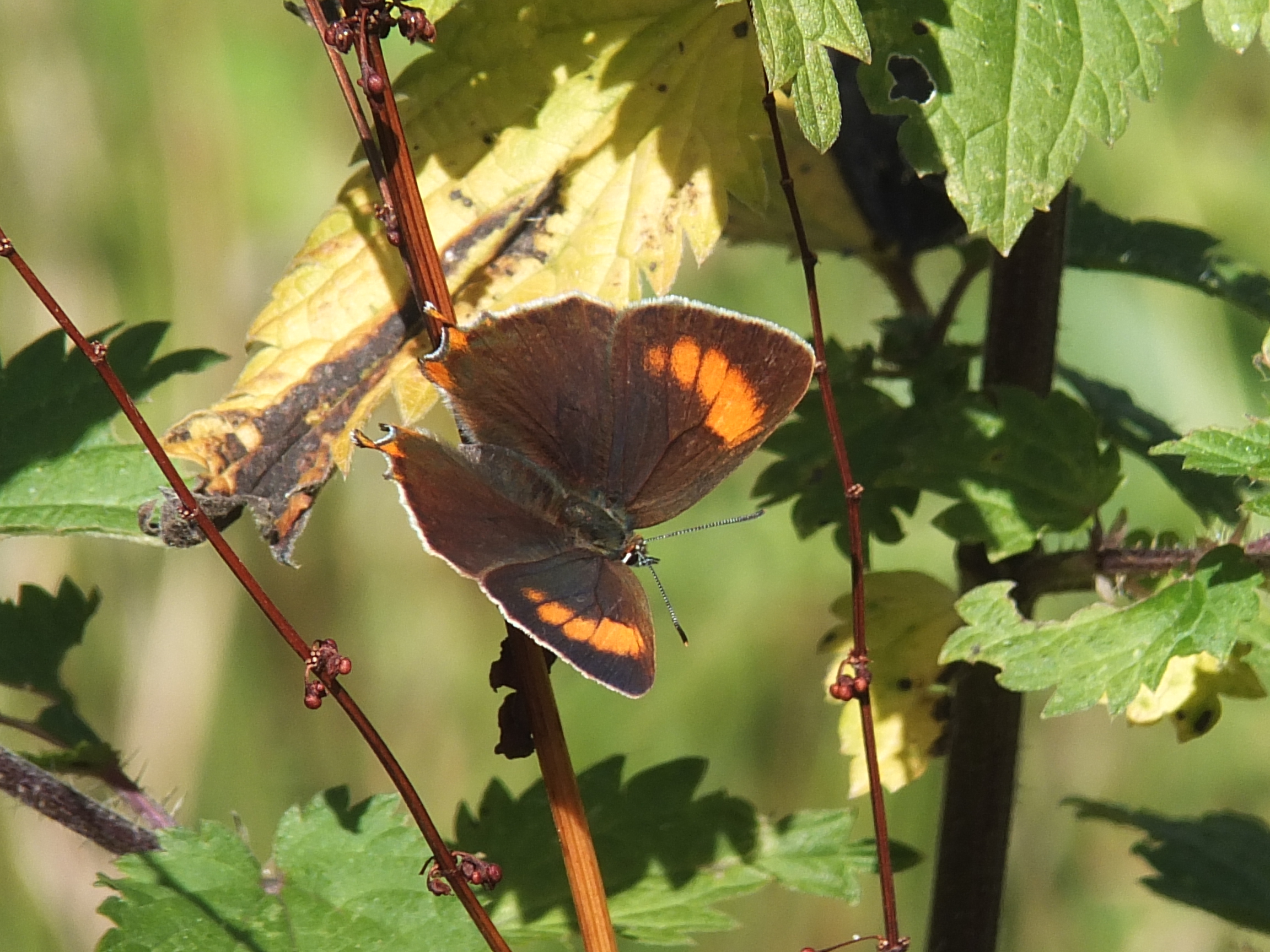
The upperside of a female brown hairstreak
Research carried out by Merckx et al., (2010) highlighted the preferences of young blackthorn growth for brown hairstreak egg laying. Additionally, their study suggests that altering the landscape structure from a linear to a scalloped pattern will create sheltered mirco-climates that will benefit the development of ecotothermic species. Therefore, by cutting mature stands of blackthorn in a rotational pattern to create these ‘scallops’, this will encourage young growth and provide conditions that are suitable for egg laying. Moreover, it seems that the brown hairstreak requires a habitat that is continuing to decline, and within that habitat, needs specific conditions for optimum growth. To create these conditions therefore requires sensitive management.
Curiously, adult brown hairstreaks will congregate around the ‘master tree’. A master tree serves the purpose of providing aphid honeydew, on which the adults feed on, and as a breeding site. I say curious, as research cannot determine why certain trees are chosen as the master, for observations have recorded various ages and conditions of chosen trees. Most typically, these master trees are Ash Fraxinus excelsior (though they will use oak Quercus robur), and as these trees are critical for breeding, ash dieback Chalara fraxinea is an ongoing concern for the species . Moreover, the current condition of our UK ash, may also be contributing to the loss of brown hairstreak.
SNCV and the brown hairstreak
At the SNCV, a number of sites that we work on are under the ‘Higher Level Stewardship’ (HLS) scheme. The HLS is a mechanism whereby land owners (such as Sutton Council) can apply for funding that will go towards restoring and/or conserving priority habitats and species. The government’s adviser to the natural environment, Natural England, will assess the site for suitability, i.e. whether they feel the site can successfully restore/conserve priority species and habitats. Moreover, on a number of our HLS sites, specific habitat management for the brown hairstreak is ongoing and proving to be a great success.
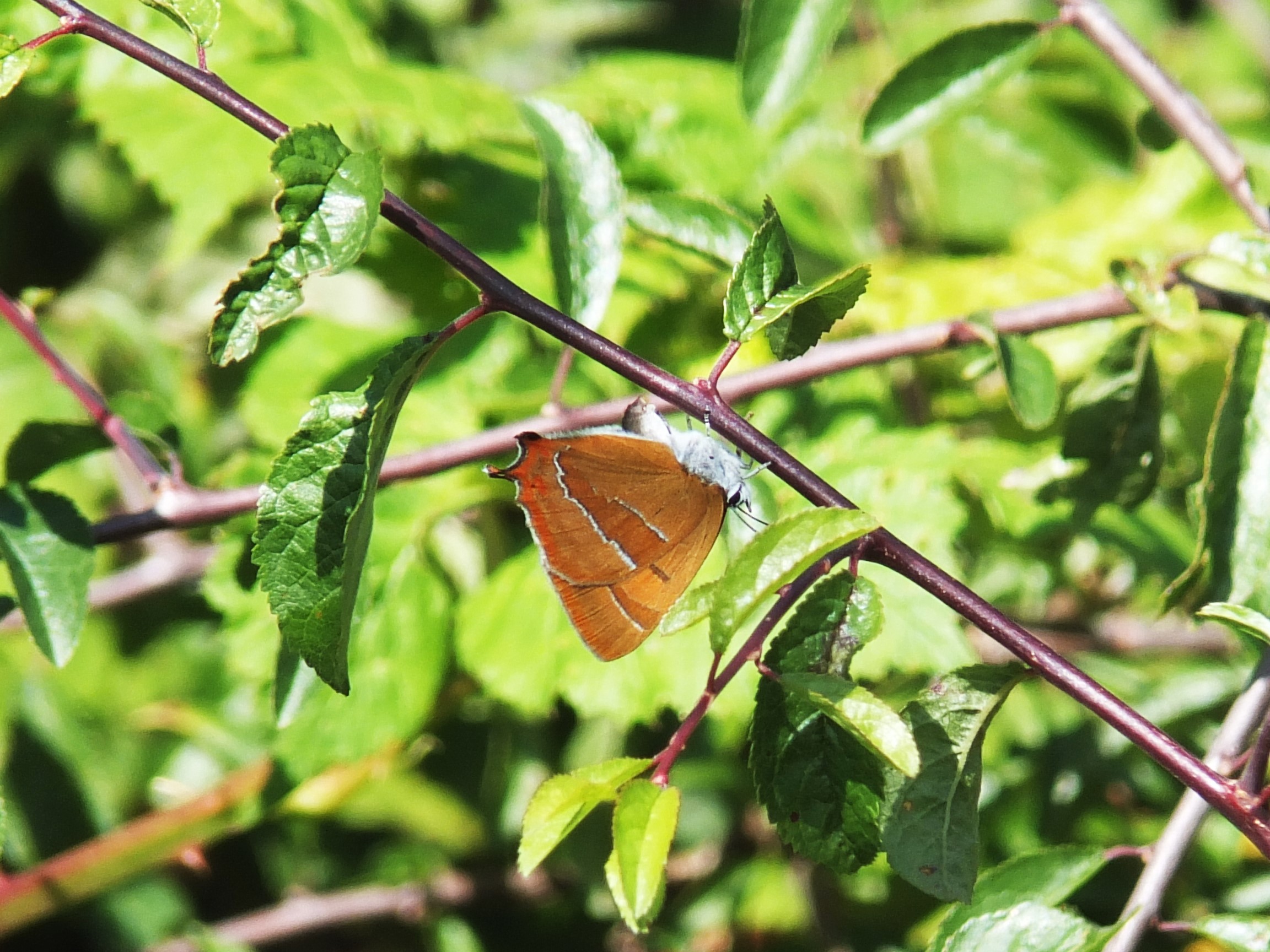
A female brown hairstreak egg laying on young blackthorn
Encouragingly, in the summer at Carshalton Road Pastures (CRP), we witnessed our first sighting of the brown hairstreak on site. This location hosts an extensive amount of blackthorn, which we have been scalloping since 2009. As well as a hot spot for blackthorn though, CRP appeared to be a Mecca for fly-tippers and a home for smashed sinks and disused armchairs. Thus, it was a very welcomed reward to see the brown hairstreak after shifting this mass of dross and comforting to know that despite these inconveniences, our target species was able to exist on site.
To add to the successes of our first sighting, during an egg search in December, we managed to find 6 eggs, neatly placed on the underside of young blackthorn branches. To any passers by, I can’t help but think that this must have been an odd sight. A group of folk, consisting of various ages, delicately poised between sharp blackthorn bushes, studying the underside of a twig, in the rain, in quest of an object that is the size of a grain of quinoa. To further this, the search for brown hairstreak eggs is also known as ‘streaking’. When I mentioned to my mother that I had been streaking at Carshalton Road Pastures, in the rain, with my boss, she looked at me bemused and slightly stunned. To this day, I still don’t understand why*.
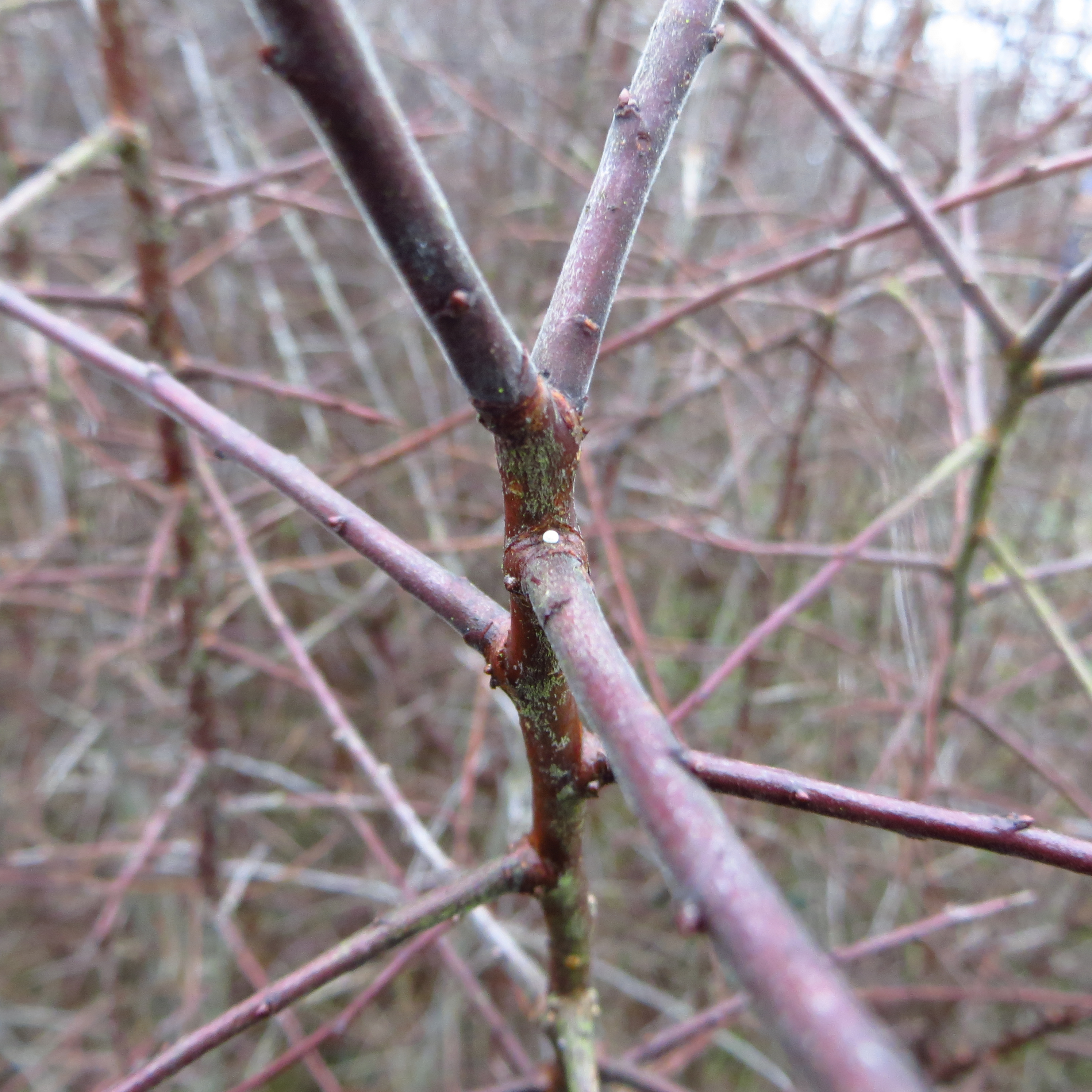
Brown hairstreak egg at CRP
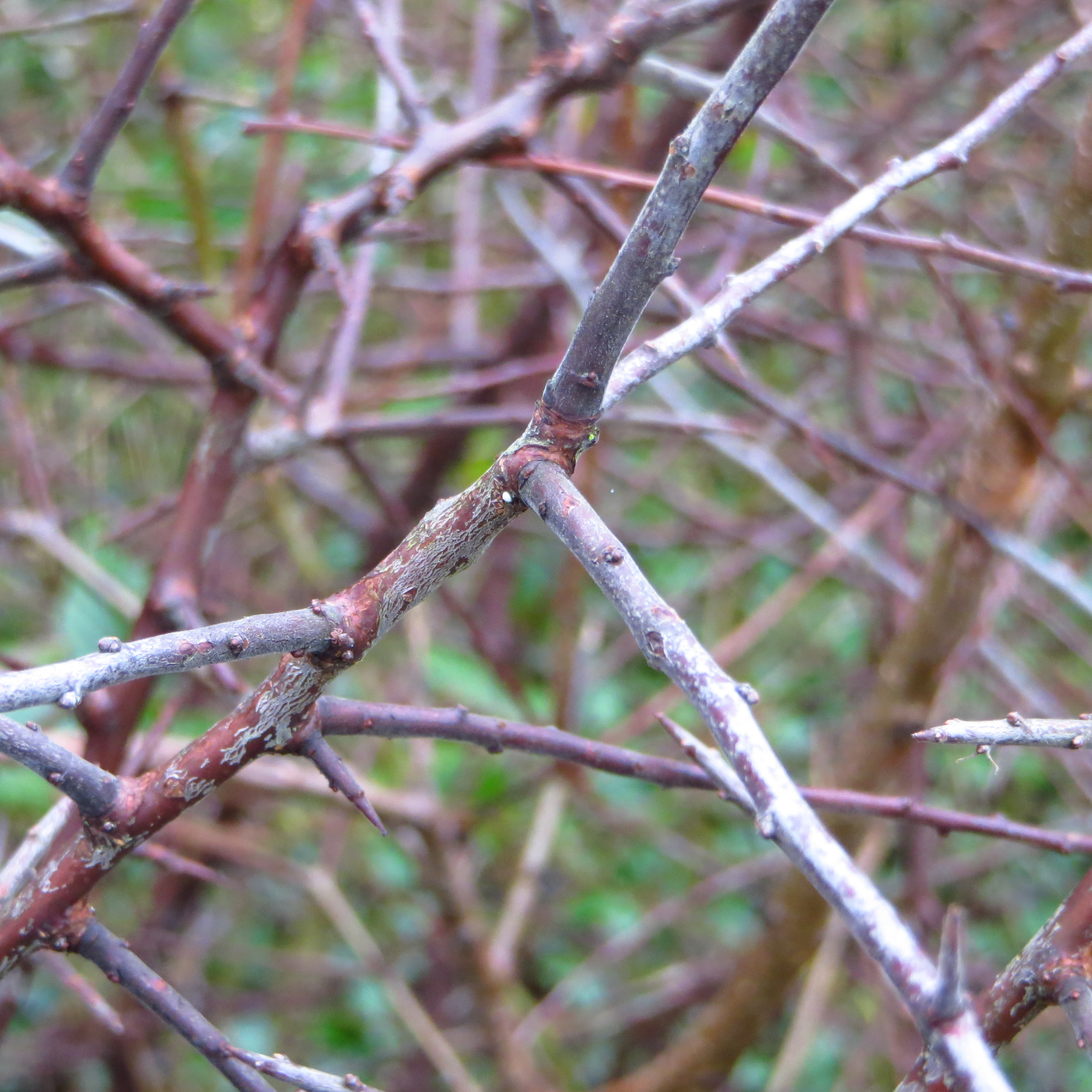
Brown hairstreak egg at CRP
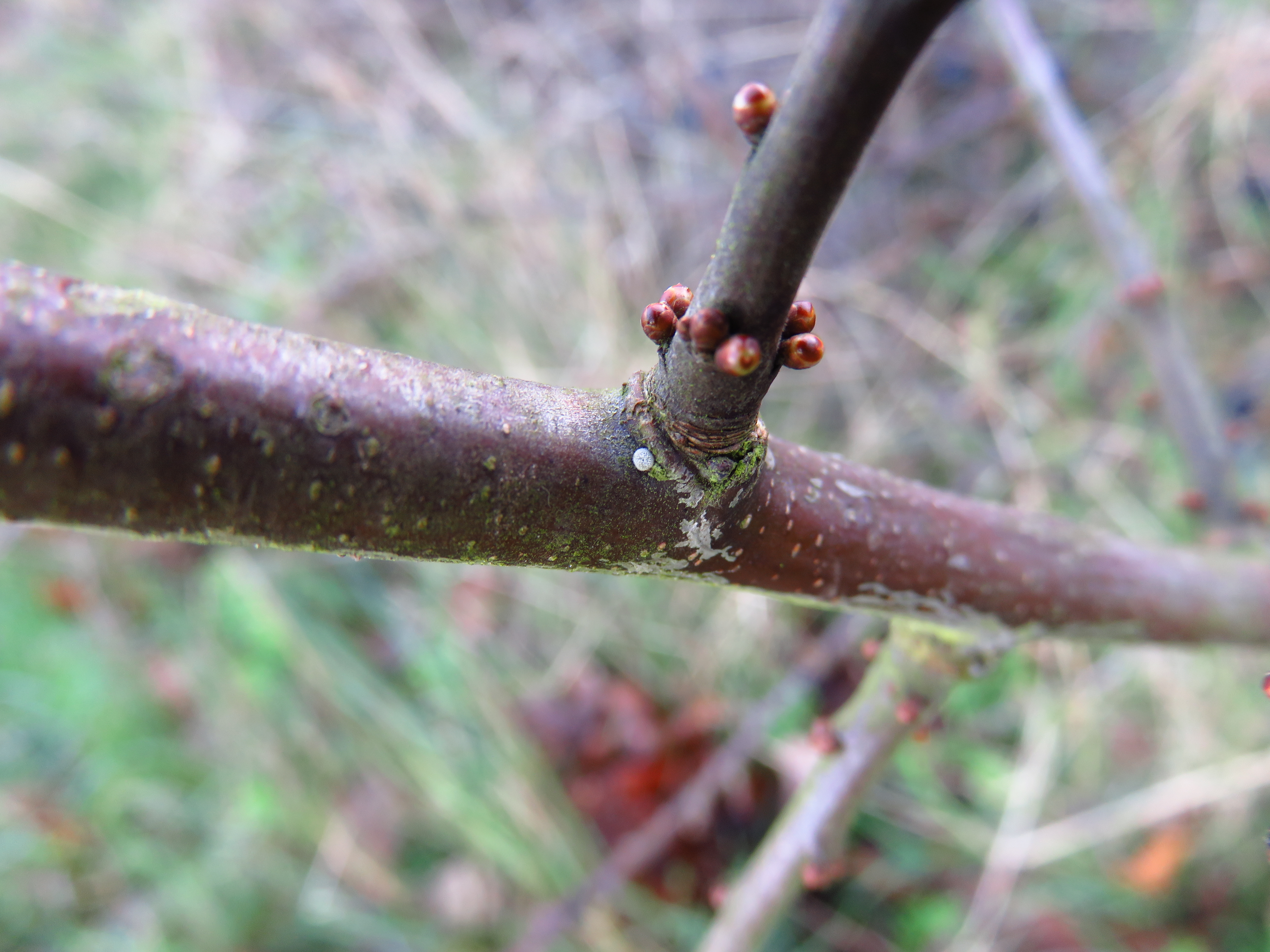
Brown hairstreak egg at Roundshaw Down
But what ever my mother thinks, finding eggs is fantastic news and it does not stop there. We’ve also seen brown hairstreaks across other sites in Sutton this year, such as at Cuddington Cemetery and Anton Crescent Wetlands, whilst Dave (Sutton’s Biodiversity Officer) also managed to find eggs on Roundshaw Downs during a search on Christmas Eve. Clearly, Santa thought Dave had been a good boy in 2015. Importantly, this highlights that with careful management and understanding of good science, the SNCV and Biodiversity Team carry out conservation work that is actually making a difference for some of Britain’s rarer species. By managing areas of blackthorn across Sutton in the ‘scallop’ fashion advocated by Merckx et al, we are improving the ability for brown hairstreaks to breed on these sites and when dispersing across the landscape, to find other, suitable habitats. This *may* be increasing their distribution and population across Sutton. Therefore, when I said earlier that I saw two brown hairstreaks by chance, I think this maybe more down to the work that the SNCV undertake.
Keep an eye out on the events page where we will be running a butterfly day course in the summer. Similarly, if you want to learn more about butterflies, I’d suggest Butterfly Conservation who provide comprehensive information about our British Butterflies and very enjoyable blogs. You may also be interested to know about the Surrey and South West London branch of Butterfly Conservation, who provide local news and events for all things butterfly.
*correction – the search for brown hairstreak eggs is not actually referred to as ‘streaking’ – that was a joke.







April 15, 2017 at 2:29 am
Roger Hawkins was up at Warren Farm starting his annual battle with goldenrod yesterday. I had read the above article and after he had eaten his meal I asked him if the shrubs around were the food plant for the brown hairstreak. He replied that they were and that he had previously seen the butterfly at Warren Farm, and had known it since he was a child.
Within a minute I said I had found something that looked like a butterfly egg (I am rather short sighted) – out came his hand lens and he said it looked possible but he had never actually seen the egg before! I could see a pattern and central dimple – and from photos it looks right.
My thanks to you and Sutton Nature Conservation Volunteers for the inspiration to ‘just go and see’.
Mike